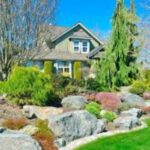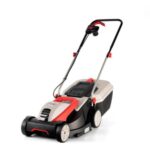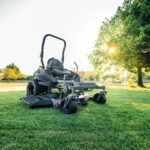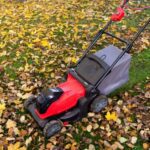As a landscaper with over 7 years of experience working on residential properties across the United States, I’ve witnessed firsthand the ever-growing debate around the American lawn. What was once simply a matter of mowing the grass has transformed into a hotly contested battleground, with strong opinions on all sides about what a lawn should or shouldn’t be. Read below about “How the American Lawn Became a Battleground for Domestic Landscaping?”.
In this article, I’ll explore how the concept of the perfect green lawn became so ingrained in American culture, why it’s now being challenged, and what some alternative landscaping options are for homeowners today.
Table of Contents
How the American Lawn Became a Battleground for Domestic Landscaping?
The Rise of Lawn Culture
So how did lawns become so central to the American dream? We can trace it back to European aristocrats in the 1700s who flaunted their large estates and lush green lawns as a blatant sign of wealth and status. Immigrants coming to America wanted to emulate that, so they worked hard to cultivate those same pristine grass lawns around their homes.
Over time, the lawn became firmly cemented as a symbol of prosperity, order, and the American way of life. By the 1950s and 1960s, families were moving out to the suburbs en masse and the lawn had evolved into a standard expectation for every homeowner. Countless products and services popped up to help achieve that picture-perfect green space, from chemical fertilizers and weed killers to riding lawn mowers and professional landscaping companies.
For decades, little changed and the lawn reigned supreme. But over the last 10-15 years, there has been a major shift happening. Homeowners today are much more environmentally conscious and interested in sustainability. There’s also far more diversity in what people want their outdoor space to provide – whether that’s native plants, edible gardens, wildflowers, or low maintenance groundcovers. Simply having a monoculture of grass is no longer satisfying expectations for many Americans.
The Environmental Impact
One of the biggest factors challenging today’s lawn is that it requires significant resources to maintain that flawless carpet of green. With climate change and water shortages becoming very real issues, more people are questioning the high inputs of water, fertilizers, pesticides, gas for mowing, and time needed for upkeep.
To put some numbers behind it, researchers estimate there are 40-50 million acres of lawn space in the U.S which consume nearly 3 trillion gallons of water per year. That’s even more than what we use to grow all our nation’s corn and wheat combined!
In addition, gas lawn mowers emit tons of air pollutants every year from their 2-stroke engines. Even electric mowers require energy from fossil fuel power plants. Fertilizer runoff contributes to toxic algae blooms and dead zones in waterways. Pesticides endanger pollinators like bees and butterflies, critical for our food supply.
Simply examining the environmental impacts makes a strong case for why the traditional lawn must evolve.
The High Costs
For many homeowners today, the rising costs of maintaining a pristine green lawn have also become prohibitive. As a professional landscaper working in the Washington D.C. metro area, I typically charge $35-$50 per mow for the standard suburban lawn. With the growing season here lasting 6-7 months, that can mean $500-700 or more per year just on basic mowing, not counting extra services like fertilization, aerating, seeding, weed/pest control etc.
Water costs are also skyrocketing in many parts of the country. The average household uses over 10,000 gallons on their lawn annually, which can easily add $200+ to their utility bills. And of course the expenses don’t stop there – on rakes, hoses, mowers, topsoil, grass seed and everything else needed for lawn upkeep.
In today’s economy with high inflation and recession worries, less homeowners are willing or able to dedicate so much money to grass. The rising popularity of xeriscaping and native plant gardens is often directly tied to reducing maintenance costs long-term.
The Loss of Biodiversity
Ecologists have also raised concerns about how the spread of lawn monocultures greatly reduces biodiversity. Life needs variety to thrive, but turfgrass completely displaces natural plant communities and the wildlife depending on them. For example, the United States has lost over 150 million acres of natural meadows and prairies converted to lawns since the 1940s – causing habitat loss for hundreds of butterfly and bee species.
Additionally, typical lawn care practices like frequent mowing, raking, and blowing debris further degrade habitats. Valuable shelter and food sources like leaf litter, fallen branches, and un-mowed taller grasses are removed. Nesting sites and overwintering locations for beneficial insects and pollinators are lost. Birds and small mammals lose protective cover from predators. The disruptions ripple up the food chain.
With insect populations rapidly declining worldwide, transforming useless turfgrass into dynamic, eco-friendly plantings has become an urgent priority. Every bit of added habitat helps counterbalance biodiversity losses and supports the web of life.
Exploring the Alternatives
The growing pushback against lawns doesn’t mean homeowners need a dirt patch in their yard! There are endless creative alternatives to explore that provide beauty and functionality with fewer inputs and more ecological benefits. Here are just a few ideas I suggest to clients:
- Native Plants & Pollinator Gardens – Filled with milkweeds, coneflowers, asters and more flowering perennials, these gardens need little care while attracting and supporting bees, butterflies, hummingbirds and other beneficial wildlife.
- Edible Landscapes – Incorporate fruit trees, berry bushes, vegetable gardens and culinary herbs around your yard for beauty and food production. Great for savings on groceries!
- Ornamental Grasses – Lovely alternatives to turfgrass, many native grasses handle drought, need less mowing, prevent erosion, and provide winter interest.
- Groundcovers – Low-growing perennials like sedums, ajuga, thyme, wild ginger – great for rock gardens, borders, accent areas. Require little weeding or water once established.
- Meadow Plantings – Create a mini meadow of wildflowers and grasses. Just an annual mow/rake keeps it tidy and blooming. Critical habitat for pollinators!
- Xeriscaping – Take cues from desert landscapes by using gravel, stone, drought-tolerant plants. Reduces water usage up to 60%!
- Yard Art & Hardscapes – Add visual interest and whimsy with sculpture, boulders, fences, arbors, patios, pathways. Draw the eye to vignettes away from lawn.
- Organic Lawns – Minimize chemicals through soil health building, overseeding, natural amendments, non-toxic controls, proper mowing height/frequency. More eco-friendly.
And this just scratches the surface of possibilities! By thoughtfully assessing your needs, space and constraints, you can craft custom landscaping that works for both the planet and your lifestyle.
The Future of Lawns
While I don’t see the traditional lawn disappearing anytime soon from the American landscape, I do predict major shifts continuing over the next decade. Consumer demand, environmental awareness, climate change pressures and rising costs together create an undeniable impetus for change.
Younger, more progressive homeowners are leading the charge in adopting sustainable landscaping alternatives like pollinator gardens, edible plantings, native meadows and drought-tolerant xeriscapes. As climate change accelerates and ecosystems falter, these alternatives will become necessity, not just choice. Even longtime lawn owners are starting to reconsider.
Conclusion
I also foresee new technologies emerging around organic lawn care, robotic mowers, artificial turf and maybe even drought/pest resistant grass varieties to reduce inputs. Smart irrigation controllers and green landscaping incentives/rebates will help drive water conservation. The power of social media and platforms like Instagram will continue influencing perceptions around acceptable lawn aesthetics and norms.
While the picture-perfect green lawn will likely always retain some cultural cachet in America, it no longer holds the singular position it once did. As more people discover the possibilities beyond grass, I’m excited to see sustainable landscaping claim its rightful place as the new symbol of prosperity, order and the American way of life for the 21st century. The alternatives not only benefit homeowners, but all of us relying on a healthy planet to thrive. I hope you like reading “How the American Lawn Became a Battleground for Domestic Landscaping?”.
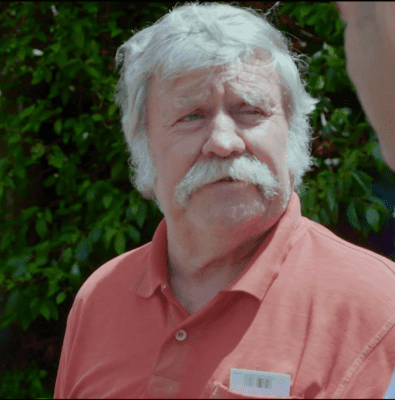
Barry, the expert behind LawnInspection.com, holds a Master’s degree in Horticulture and brings over 20+ years of hands-on experience in landscaping and lawn care. With certifications in sustainable lawn management, Barry is dedicated to providing readers with authoritative insights and practical tips for maintaining lush, healthy lawns. His extensive knowledge and commitment to excellence ensure that every piece of advice on LawnInspection.com helps transform your lawn into a green oasis with proven, eco-friendly practices. Connect with Barry on social media: Instagram and Facebook.





